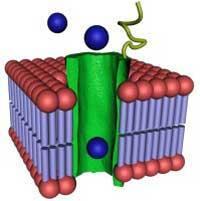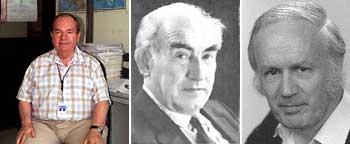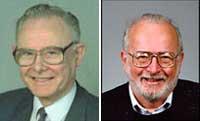Nobel Prize 2003
2003/11/01 Roa Zubia, Guillermo - Elhuyar Zientzia Iturria: Elhuyar aldizkaria
Nobel Prize in Medicine, for two physicists Paul C. American Lauterbur and English Sir Peter Mansfield, physicists.
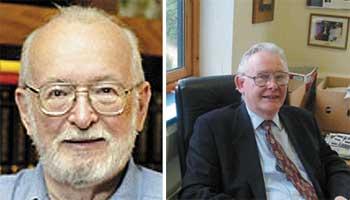
As reported on the Nobel Foundation website, they will be awarded for "making discoveries related to magnetic resonance imaging technique". In short, to open the way to apply nuclear magnetic resonance that use physicists and chemicals in medicine.
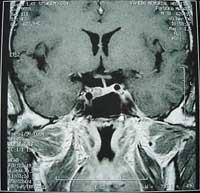
This technique is used to explore the internal organs of the body and is part of the set of non-invasive techniques. This means that they allow the doctor to observe the organs without opening the body of the patient. These non-invasive techniques are widespread in modern medicine, for example, to prepare an operation or to decide whether to operate or not. In addition, you can know beforehand the shortest way to reach the point of the disease when cutting.
In addition, this technique has become an essential element for diagnosis in current hospitals, since it is a very appropriate technique to observe the state of the organs and tissues. It is used to diagnose neurological diseases such as Alzheimer's disease.
Compared to other non-invasive techniques, magnetic resonance representation does not use dangerous electromagnetic radiations, so it does not produce side effects.
Resonance adapted
This internal examination capacity of the body is provided by various techniques, but magnetic resonance representation is one of the most common. Today it is a conventional diagnostic technique in medicine, and perhaps that is why it seems curious that the award is granted to two physicists, but in its origin, nuclear magnetic resonance is a technique of analysis of atoms and molecules, from which it became a resource of hospital use.
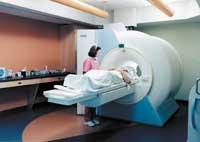
How do the organs look with this technique without opening to the sick person? The truth is that the technique does not get images, but can be completed with the data it provides. This was the contribution of physicists Lauterbur and Mansfield. The technique analyzes the water molecules of the body's organs through the nuclear magnetic resonance of the protons; the award-winning scientists developed the way to interpret the information obtained from this experiment. Paul C. The American Lauterbur managed to make two-dimensional images using magnetic field gradients. The English Sir Peter Mansfield perfected and accelerated the method and developed the mathematical models necessary to create the image.
This year's Nobel Prize in Medicine, therefore, will be awarded to those who turned magnetic resonance into a technique of representation. This technique is an adaptation of the nuclear magnetic resonance used in chemistry and physics, although due to its diagnostic importance its use in the medical field has been the one that has had the most impact on society.
Superconductivity and superfluidity in the Nobel Prize in Physics Alexei A. Abrikosov and Vitaly L. Russian Ginzburg and Anthony J. The prize will consist of a third of the English Leggett Awards.
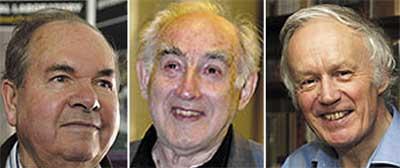
Alexei A. Abrikosov was born in Moscow in 1928. He lives in the American city of Argonne, Illinois. He obtained a doctorate from the Moscow Institute of Physical Problems in 1951. He has carried out his main research at the Argonne National Laboratory. | Vitaly L. Ginzburg was born in Moscow in 1916. He did his doctoral thesis at the University of Moscow. Main studies P. N. N. He did them at the Lebedev Institute of Physics. He led the basic science team. | Anthony J. Leggett was born in London in 1938 and currently lives in the United States. He earned a doctorate from the University of Oxford in 1964. His main research was conducted at the University of Illinois, in the city of Urbana, in the United States. |
According to the theory of superconductivity, certain materials can drive electricity without resistance to temperatures close to absolute zero. If this phenomenon occurs at room temperature, it would represent a great advance in electrical systems. No energy would be lost in the circuits. On the other hand, superconductors have special physical characteristics, such as levitation.
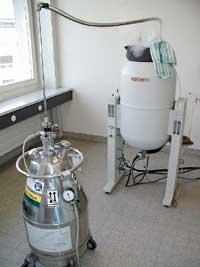
However, these phenomena occur at very low temperatures and more energy is spent than when the material is cooled, that is, superiority is not yet profitable. Therefore, one of the challenges of physicists is to get superconductors of "high temperature". As a result, new superconductors are finding themselves almost continuously. And as new materials are discovered, physicists have to adapt the theory to explain their behavior.
The Nobel Prize in Physics will be awarded this year to two scientists who took this step. This same award was awarded by John Bardeen, Leon N, for having previously explained the basis of superconductivity. To physicists Cooper and Robert Schrieffer in 1972. However, this theory does not raise all types of superconductivity, there are materials that do not fully conduct magnetism when they become superconductors, so an additional explanation was needed to understand this behavior.
The new theory was developed by Abrikosov from another simple theory proposed by Ginzburg. For these works will receive this year the Nobel Prize.
For its part, the English Leggett will also receive a third of the prize for developing the theory of superfluity, the theory of superliquids. This theory explains why some liquids lose viscosity at absolute zero temperature. This is the case of helium.
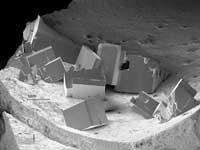
It is not surprising that the theory of superfluence and that of superconductivity rewards each other; in short, both are similar and relate to each other. For example, from a microscopic point of view, they are based on a similar mechanism, in which pairs of electrons are formed in superconductors and in the case of superfluids several isotopes are organized.
The Nobel Foundation wanted to connect that of Physics with the Nobel Prize in Medicine, since today magnetic resonance devices use liquid helium to cool a superliquid, a superoil and perform magnetic resonance.
Nobel Prize in Chemistry, two research on cell channels The winners are Americans Peter Agre and Roderick MacKinnon, who will receive the prize equally.
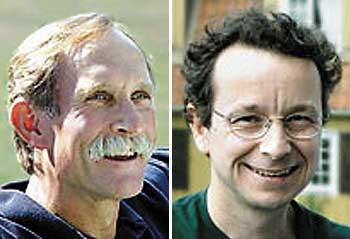
Peter Agre was born in Northfield, Minnesota, in 1949, in the United States. He studied at the Johns Hopkins University School of Medicine in Baltimore, where he has been a professor of biology since 1993. | Roderick MacKinnon was born in 1956 in the United States. He studied at Brandeis University in Boston. Since 1996 he has been a professor of Biophysics and Neurobiology at The Rockefeller University. |
The function of the extracellular membrane is, in addition to protecting it, to communicate with the environment, since many substances must enter and exit the cell. For this purpose, it uses proteins in the form of channels. These proteins are membrane-integrated structures that give access to or solution to certain substances. These channels are specific, that is, there is a type of channel for each type of substance that is going to enter or exit.
This year's Nobel Prize winners in Chemistry have investigated some of these channels, water and potassium ions. These channels are proteins of great importance since they participate in the processes of communication of the cell. Many diseases have to do with the functioning of the channels. Hence the long research of these proteins.
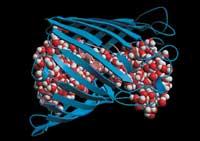
Understanding the mechanism that introduces water into cells is fundamental, since all body organs must control the flow of water. For example, the knowledge of these proteins is essential to understand, among other things, the functioning of the kidney and the heart.
Although they are very important proteins, water channels were not identified until 1988. The search was long because the biochemists knew that there had to be those channels, but no one found them. The American Peter Agre managed to isolate one of them for the first time. This year he will receive the Nobel Prize for this work.
However, the channels of the ions are known much earlier. They are very abundant, since many mineral salts intervene in biological processes, specifically in the cell membrane. For example, they intervene in some processes related to the cell's energy production and the transmission of signals between neurons. Thus, calcium, potassium, protons and sodium are one of the most abundant ions that cross the membrane. American Roderick MacKinnon worked with potassium transport channels and in 1998 he discovered the exact spatial structure of this protein.
The research of the cell membrane is, therefore, the basis of the Nobel Prize in Chemistry. Perhaps in the section of physiology it could be expected that a work of this type would be awarded, but those of the Nobel Foundation have decided to do so this year; the Nobel Prize for Medicine has awarded physicists and that of Chemistry to biochemicals.

Gai honi buruzko eduki gehiago
Elhuyarrek garatutako teknologia



